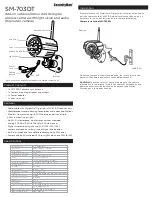
DSP-10 User Manual
Page 22 of 26
DSP10_MAN_C
6. Configuration
Wiring
The wiring for each loop circuit must be kept twisted to provide the most reliable operation. Wire nuts should
never be used for any connection in the loop circuit.
The last set of characters in the model number designate the operating voltage for the detector. There are
three possible types:
LV
10 to 30 volts, AC or DC (Low Voltage)
117
100 to 135 volts AC
230
200 to 270 volts AC
There is only one wiring configuration (pin-out) offered.
DSP-10-LV, DSP-10-117, and DSP-10-230:
Pin
Wire Color
Function
1
Black
DC + or AC Line hot
2
White
DC Common or AC Neutral
3
Orange
B ( N.O. closes for detect)
4
Green
Chassis Ground
5
Yellow
Relay A common
6
Blue
Relay A (N.O. closes for detect)
7
Gray
Loop
8
Brown
Loop
9
Red
Relay B common
10 Pink or White/Black
Relay A (N.C. opens for detect)
11 Violet or White/Red
Relay B (N.C. opens for detect)
Internal Settings
There is only one setting internal to the detector and it is the fail-safe or fail-secure setting. There are three
jumpers between the two relays. All three jumpers must be set the same way or unpredictable operation of the
A output will occur. The printed circuit board is clearly marked with fail-safe on one side and fail-secure on the
other. The detector is shipped from the factory in the fail-safe condition.
Figure 11: Fail-Safe and Fail-Secure Internal Jumpers





































